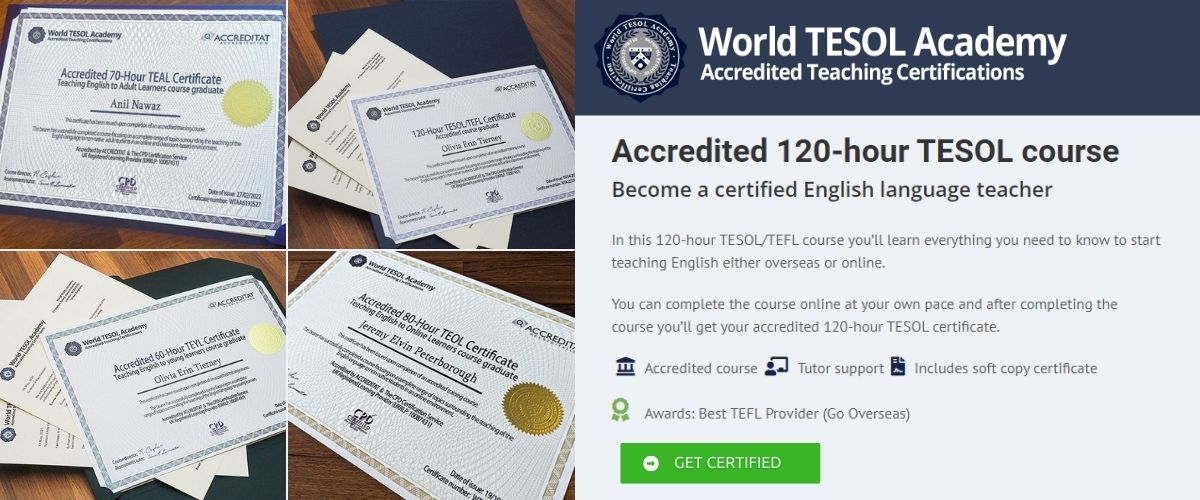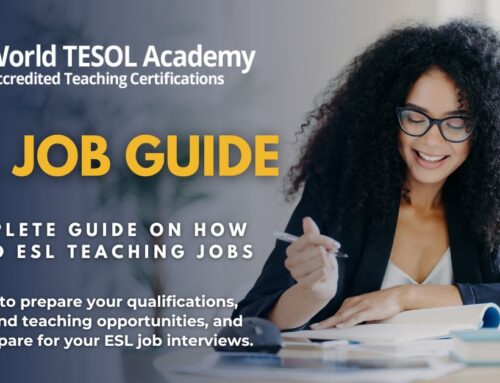
How to Start Teaching English Online: Insider Tips From an Experienced ESL Teacher
Hello there! I’m Onyinye, a professional ESL teacher from Nigeria with over 4 years of teaching experience. I want to share with you my best tips on what you should keep in mind when launching an English teaching career online!
Thanks to a global demand for accessible language education, and the development of new technological online learning solutions, the English education sector is growing at a steady pace. This growth has created a significant need for qualified ESL teachers. Pursuing a career as a professional online English teacher is a rewarding career path that is becoming more popular thanks to the flexibility and convenience of being able to connect with students from all over the world.
Yet, embarking on a journey into the virtual teaching realm can appear daunting if you are just starting out. Questions such as “How do I get started?“, “Where can I find reputable companies that are hiring?“, “What are the necessary qualifications and certifications I need to possess?“, and “How can I make my job applications stand out?“ are common among aspiring online ESL teachers.
In fact, many successful online English teachers started out with these exact questions, and teacher Onyinye was no different. However, through a combination of dedication, hard work, and a willingness to learn and adapt, she managed to find the answers and successfully build a career as a professional online English teacher.
About Onyinye
For the past few years, I’ve been living and working as an online English teacher in Nigeria. In the early days of my online teaching career, the majority of my students were from Taiwan. After that, I briefly worked with students from Israel.
Name: Onyinye
Nationality: Nigerian
Profession: Professional English teacher
Experience: 4+ years of teaching experience, both face-to-face and online.
Now I teach students from all over the world. Working remotely has allowed me to teach students from different continents, all from the comfort of my desk.
To help show us that pursuing a teaching career online is not just a far-fetched dream, Onyinye has been kind enough to share her hard-earned insights on what steps you could follow if you too want to start teaching English online and land your dream ESL job.
Let’s take a look at her best tips on how to start teaching English online!

1. Obtaining a teaching certificate from a reputable institute
Before you start your job search, you need to make sure that you have your teaching qualifications in order! Teaching certificates such as TESOL, TEFL, etc. are the essential qualifications you need for teaching English online. These certificates are easy to obtain online by enrolling in a teacher training course with a course provider. When selecting a course provider, make sure that they are properly accredited as this will help ensure that your certificate is recognized by employers.
Now, why do we need teaching certificates? Having a TESOL/TEFL teaching certificate is essential as it will help provide you with the necessary theoretical and practical knowledge on how to plan ESL lessons, and how to use effective teaching techniques for English learners of all ages. Overall, it provides you with a foundational skill set that is necessary if you consider becoming an ESL teacher.
Another point to note is that employers very often ask for your teaching certificate when you apply for teaching positions, so you’ll be doing yourself a favor by getting one as soon as possible.
In addition to your TESOL/TESOL certificate, some providers also offer specialist courses that allow you to pursue further certification and expand your skillset to become an expert in teaching specific types of students, e.g. adults, kids, online students, etc. It’s a convenient way to give your resume a boost and get ahead of the competition.

2. Design your workspace and teaching background
As an ESL teacher for kids, aside from a computer with a webcam, strong internet connection, and a headset, it is highly recommended to create a well-lit, colorful, and kid-friendly background. Store-bought stickers, alphabet cut-outs, glitter glue, etc. attached to a backdrop or a wall could be all you need to make a perfect teaching background.
You should also consider what types of teaching props you want to use during your lessons. Store-bought or DIY flashcards are a staple teaching tool that you’ll want to invest in if you plan on teaching kids. It’s also recommended to invest in some props or toys that could pass off as props, as they can be useful in making your classes more fun and engaging.
If you are planning on teaching adults, you may instead opt for a more neutral background without too many distracting and colorful elements. This will help you give off a more professional vibe. When decorating your workspace, remember that context is key!

3. An introduction video and resume
In the world of ESL teaching, a well-written resume highlighting your skills and qualifications is a core requirement to put together if you plan on applying for jobs. When it comes to online teaching, there’s one more item that many teachers forgot to prepare, namely their introduction video.
In addition to your resume, you should also prepare an introduction video where you introduce yourself and talk about your skills and experience. They both work together to land you a contract with a teaching company. Shooting a video is quite easy and most times doesn’t require professional assistance or any assistance at all. All you might need could just be a tripod, smartphone, your workspace, and props.
Here are a few tips on shooting your video:
- Keep your video to a reasonable length, with a maximum duration of 2-3 minutes at best.
- Maintain a good smile, speak clearly, and look straight into the camera.
- Introduce yourself, and highlight your experience, qualifications, and teaching skills.
What do you say in the video? An introduction is more like an audio-visual cover letter that lets you present your qualifications, skills, and work experience while showcasing your work environment and personality.
It is best to keep your video concise, not exceeding 3 minutes (some recruiters might state their preferred duration). A good tip is to search on YouTube for inspiration and tips on how to shoot and edit your introduction video for specific companies. Resume templates are straightforward to find online as well.

4. Demo class video:
It’s good for teachers with prior teaching experience, either offline or online to try and add that to their online teaching portfolio. This can be done by recording lessons using video conferencing apps like Zoom and saving it for future reference. This is a good way to showcase your skills in a natural teaching setting with real students. However, it’s worth mentioning that it can sometimes be a bit difficult to get permission to record videos as some companies are highly against it due to the privacy of their students, especially kids. So, remember to always confirm first that you have permission to record a lesson.
An alternative to this is recording a class on your own while teaching a pretend student. This is a great chance for inexperienced teachers to showcase their teaching skills and classroom persona. You can upload the video to a cloud service like Google Drive and then share the link in your email when sending over your resume, teaching certificate, and introduction video to the employer. Giving the employer a chance to see you in action could help increase your chances of being considered as a good candidate for hire.

5. Consider teaching young learners
When I first started, my students were young learners aged 4-16 years. I worked mainly with kids in my early years to help build up my experience in the industry, and it sure paid off.
Even though I currently work mainly with adult learners, I’d always encourage people to start by teaching kids.
Here are my reasons:
- Most companies that cater to kids are always in demand for teachers and so, are very open to hiring teachers who are looking to gain more experience.
- Teaching materials are often easy and don’t always require intensive lesson preparation.
- Even though different students require different teaching methods, being generally friendly and smiley goes a long way in charming your students and engaging them during the lessons.
Once you’ve managed to gather some teaching experience, you can start exploring other career paths such as teaching adults or specialized topics such as IELTS, Business English, etc. As long you work diligently and stay focused on your long-term teaching goals, you’ll be able to explore diverse teaching opportunities and settings. The sky is the limit!

6. Where to find ESL job opportunities
Just like the name implies- online teaching jobs can be found online. A simple Google search could help you find companies that are hiring. But there are better and more effective ways of accessing a myriad of opportunities and landing your dream ESL job.
Let’s take a look at how you can cast a wide net and access more teaching opportunities:
- ESL job boards and blogs – A good start is to explore online ESL job boards. There are many to choose from and you can easily browse them to find plenty of teaching opportunities in various parts of the world and online. Some ESL blogs also post leads on companies hiring. To stay up-to-date with these opportunities, a good tip is to sign up for the newsletters to receive email updates on companies hiring at different times of the year.
- Social media teacher groups – Some social media platforms such as Facebook, LinkedIn, Telegram, Reddit, etc., have communities of teachers and info-sharing groups that focus on sharing job opportunities from private individuals and ESL companies that are currently hiring ESL teachers. Joining these groups either as an active or silent member will bring you a lot of opportunities.
- Teaching Platforms – Some create-a-profile types of ESL companies such as Preply, iTalki, Amazing Talker, etc., allow teachers to sign up on their platforms without conducting an interview. The first thing you’ll do on platforms like these is to create a profile where you’ll upload your teaching certificate and other relevant qualifications, set your hourly rate, and lastly promote your services to the students on the platform. This allows students to explore your teacher profile and book lessons with you directly. While these platforms provide you with more freedom over when and how you teach, the downside is that you have to actively market yourself in order for students to find you and book lessons. One good thing for newcomers is that many of the more popular platforms are in constant demand for more teachers.
- Freelancing platforms – You can also explore sites such as Upwork and Fiverr, which can bring many opportunities to both long-term and short-term teachers and other ESL-related freelancing jobs. Signing up on these platforms and searching for individuals or companies hiring could just be all that you need to land your desired contract or job as there are thousands of opportunities in there.
Generally, belonging to a community is essential for an online ESL teacher. Working remotely sometimes could make you isolated from other people, joining a community of like-minded people online could help bridge that gap, assist you with information, help solve some common problems you’re likely going to encounter while doing your job, and sometimes even provide some humor and comic relief.

7. Acing your interview
After receiving a response from a potential employer, you will need to brace yourself for the next phase which is crucial in getting that job role you desire—the job interview.
Here are some things to keep in mind:
- When invited for an interview, you should select a time that is most suitable for you according to your time zone to avoid being late or missing the interview. Double-check the scheduled time, you could reschedule if something comes up. Ensure you don’t miss the time to avoid leaving a bad impression.
- Preparation is key! Prepare answers to common questions that often come up during ESL interviews and rehearse them until they sound natural. In addition to preparing answers, it’s also good to go over your body language when speaking to ensure that is appropriate. Don’t forget to also review your ESL teaching techniques so that you are comfortable with answering questions using appropriate ESL terminology. Interview questions often revolve around teaching techniques, so it’s definitely something you want to focus on if you wish to come off as a professional and experienced teacher!
You can find preparation guides online that focus on how to prepare for your interview (ESL job interview guide – Part 1 &Part 2, Top ESL job interview questions – Part 1 &Part 2, Top questions for young learner positions).
- Research the employer to see if there are any tips on how the recruitment process is structured and tips on how to pass the interview. Many companies have varying recruitment processes, so it’s worth checking online to see if there is any information available. You can often find guides and tips on platforms such as YouTube where other applicants and teachers have shared their tips for specific companies.
- Your interviewer might ask you to teach a mock class where they act as the student. It might feel weird but this is a test to see your teaching skills and is a great chance to showcase your props and other classroom toys. Always remember to wear a smile and speak clearly throughout the mock class.
- Don’t be afraid to ask questions if you’re unsure of what you’re expected to do during the interview. It’s better that you ask for clarification and adjust accordingly, rather than improvising.
These are my best tips on how to prepare for a teaching career online. I hope my experience and insights as an online ESL teacher can be of some help on your journey toward launching your online English teaching career.
Good luck!




Great tips. Thank you